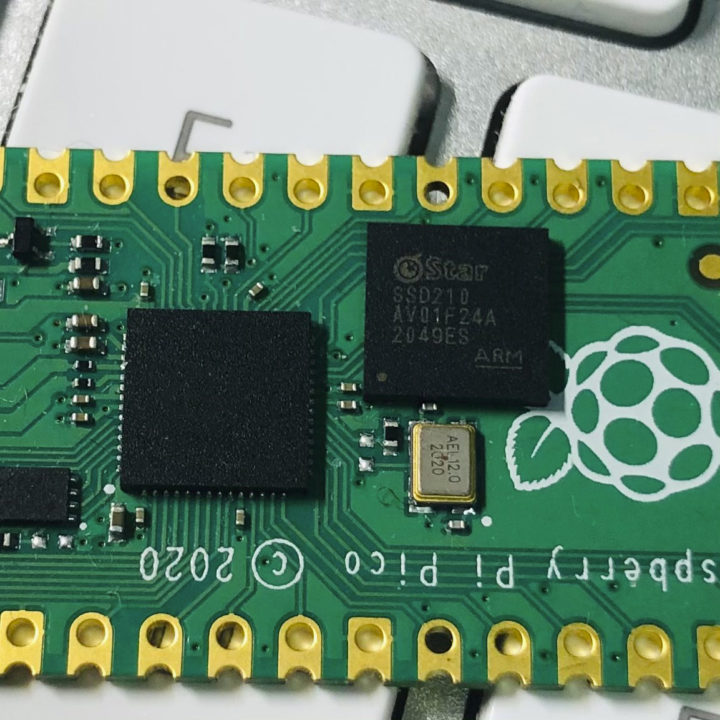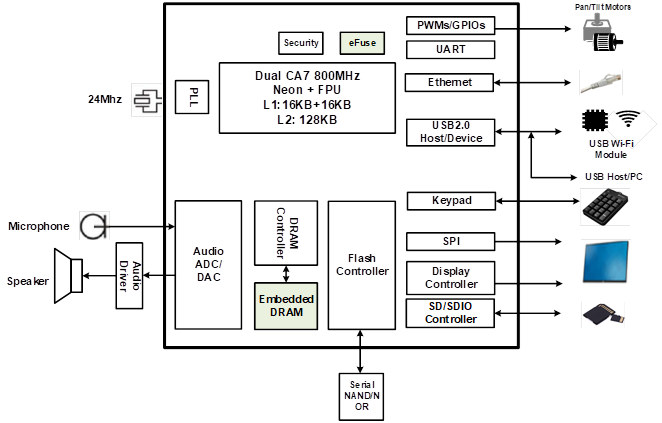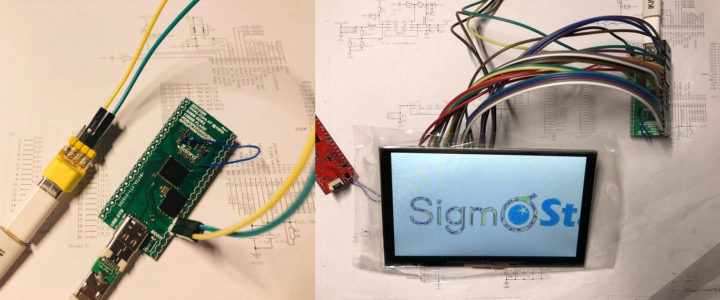SigmaStar offers some of the cheapest Cortex-A7 processors on the market, especially considering they usually integrated 64 or 128MB RAM, which parts like SSD201 or SSD202 which are designed for smart displays, but can also be found in low-cost Linux gateways.
The company’s latest SSD210 processor comes with two Cortex-A7 cores clocked at 1.0 GHz, 64MB RAM, and is offering in a QFN68 package that happens to be the exact same size (7x7mm) as the less powerful Raspberry Pi RP2040 microcontroller.

SigmaStar SSD210 key features and specifications:
- CPU – Dual-core Arm Cortex-A7 at up to 1.0GHz with FPU, NEON, MMU, DMA
- GPU – 2D graphics accelerator
- System Memory – 64MB on-chip DDR2 RAM
- Storage I/F – 1/2/4 bit SPI-NOR/SPI-NAND Flash
- Display – RGB LCD interface supporting RGB565 or RGB666 or RGB888 format up to 60 fps.
- Multimedia – JPEG encoder with support for YUV 422 or YUV420 format
- Networking – 10/100M Ethernet MAC & PHY
- USB – 2x USB2.0 host and device interfaces
- Other I/Os – GPIO, PWM, UART, fast UART with hardware flow control, SPI, I2C
- Security – Secure boot, AES/DES/3DES/RSA/SHA-I/SHA-256, support secure boot
- Misc – 3x general-purpose timers, watchdog
- Voltages
- Input/output voltage – 1.8V~3.3V
- Core voltage – 0.96V
- DRAM voltage – 1.8V
- Temperature Range – -20°C ~ 85°C
- Package – QFN68 (7x7mm)

The new chip is also designed for smart displays using in smart thermostats, HMI display modules, etc… The Linux SDK is still under according to MangoPi & Widora’s Twitter account where I found out about the new processor, including the top photo showing SSD210 is the same size as RP2040.
Speaking of which, the company also decided to create a Linux-capable, Raspberry Pi Pico-sized board based on SigmaStart SSD210. It’s possible to connect an RGB565 display, at the cost of losing access to Ethernet since the interfaces are multiplexed.
You may find more information on Widora forums as hardware and software development progresses. It’s unclear when the board will be available, and at what price at this point in time, but it should probably sell for under $10 once the board comes out.

Jean-Luc started CNX Software in 2010 as a part-time endeavor, before quitting his job as a software engineering manager, and starting to write daily news, and reviews full time later in 2011.
Support CNX Software! Donate via cryptocurrencies, become a Patron on Patreon, or purchase goods on Amazon or Aliexpress





